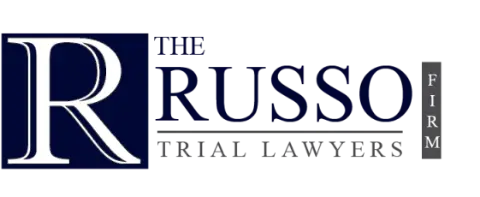- Spinal cord injuries can result from motor vehicle accidents, slip and falls, medical errors, and dangerous product incidents
- Cervical spine injuries affect the vertebrae near the brain and can cause tetraplegia
- Thoracic spine injuries affect the back and can affect breathing and balance
- Lumbar spine injuries occur to the lower back and can lead to leg paralysis
Personal injury accidents can occur due to the negligence of another party, such as a motor vehicle driver, property owner, or healthcare professional. They can make harmful decisions that expose others to severe injury risks. One common injury that can result from a personal injury accident is a spinal cord injury.
These injuries occur when the spinal nerves and vertebrae bones surrounding the spinal cord receive direct trauma. Personal injury victims can suffer different types of spinal cord injuries, including cervical, thoracic, and lumbar spine injuries, depending on where their spinal cord suffers damage. These different injuries can have their own negative effects on the body.
Spinal Cord Injuries Can Result from a Personal Injury Accident Caused by Negligence
People can suffer personal injury accidents that can expose them to direct trauma. These accidents ordinarily result from negligence or the failure to take proper care when doing something. For example, a driver must follow all road rules behind the wheel. Engaging in distracted driving is a negligent action that can cause a car accident.
Personal injury accidents can expose victims to blunt-force trauma that can cause severe physical injuries, such as spinal cord injuries. During a personal injury accident, a victim can suffer a direct blow to the back that can damage the spinal nerves or vertebrae. The fracturing, dislocation, and compression of these nerves and bones can cause a spinal cord injury.
Some symptoms associated with spinal cord injuries include intense pain, reduced mobility, bladder control issues, loss of sensation, muscle spasms, and paralysis. What spinal cord injury someone can suffer depends on where their spinal cord receives blunt-force trauma.
Cervical Spine Injuries Caused by Negligent Accidents
One of the most severe types of spinal cord injuries is a cervical spine injury. The cervical portion of the spine is at the top, closer to the brain than any other portion. Its proximity to the brain means any injury here can affect large portions of the body.
Someone can suffer a cervical spine injury when they suffer blunt-force trauma to the head and neck. It can also result from whiplash during a car accident, which involves the violent shaking of the head and neck. The cervical portion of the spine can snap violently like a whip and cause enough damage to the spinal nerves and vertebrae to cause a cervical spine injury.
The following are some of the health consequences associated with a cervical spine injury:
- Intense pain in the spine
- Paralysis of the arms, hands, and legs
- Issues with control of movement, bowels, bladder, speech, and coughing
- Tetraplegia, or the paralysis of all four limbs
Personal Injury Accidents Can Cause Thoracic Spine Injuries
The thoracic portion of the spine is the largest section and stretches from the upper-middle to the middle part of the back. The nerves in this section of the spine affect muscles in the upper chest, back, and abdomen. They help to control the rib cage, diaphragm, and lungs. The nerves in the thoracic help you breathe, maintain balance and posture, and cough.
Direct trauma affecting the back during a personal injury accident can cause a thoracic spine injury. The pain caused by the injury can affect the arms, legs, and rib cage. It can lead to leg weakness, lower back pain, loss of feeling in the genitals, loss of bladder control, and paraplegia.
How Can a Negligent Accident Victim Suffer a Lumbar Spine Injury?
The lumbar spine is the lowest of the major portions of the spine. It carries the most weight of any section and features the largest vertebrae as well. During a negligent action like a car accident, victims can sustain physical trauma to the lower back and suffer a lumber spine injury.
An injury to the lumbar spine can affect a person’s ability to use their hips and legs. Loss of function in the lower body can lead to walking and bowel control problems. They may require a wheelchair or leg braces to move around while recovering from a lumbar spine injury.
Due to the severity of losing the ability to walk, personal injury victims should go to the hospital after their accident. A healthcare professional can diagnose their injuries and assess what medical treatments can help to heal the injuries before long-term health complications begin to take shape.
Contact The Russo Firm for Help With Your Spinal Cord Claim
At The Russo Firm, our personal injury lawyers can help you hold the at-fault party accountable for spinal cord damages. We understand the physical and emotional pain and suffering caused by a spinal cord injury and wish to help you hold the at-fault party liable for their negligence that changed your life.
Our experienced personal injury attorneys offer free consultations to show those with spinal cord injuries how they can help them recover fair compensatory damages. Contact us for a free Camp Lejeune consultation today at (561) 270-0913 or leave a message on our online contact page.
Frequently Asked Questions About Spinal Cord Injuries
What Negligent Accidents Can Cause Spinal Cord Injuries?
Any accident that can expose the spine to direct trauma can cause a spinal cord injury. Personal injury accidents ordinarily occur due to the negligence of the at-fault party, meaning they acted recklessly and exposed others to harm.
The following are some negligent accidents that can cause spinal cord injuries:
- Car accident
- Motorcycle accident
- Truck accident
- Pedestrian accident
- Bicycle accident
- Slip and fall accident
- Boat accident
- Bus accident
- Medical error
- Defective product incident
Who Can Be Held Liable for Causing a Spinal Cord Injury?
The liable party in a personal injury accident that causes a spinal cord injury is whoever caused the accident through negligent behavior. Anyone who fails to act safely to keep others from incurring harm can be held liable. This can include someone who acted recklessly to cause harm purposefully or someone who made a mistake that resulted in a spinal cord injury.
The following are some potentially liable parties in a spinal cord claim:
- Motor vehicle drivers
- Healthcare professionals
- Employers
- Property owners
- Public store employees
- Boat owners
- Product manufacturers
How Can You Prove the At-Fault Party’s Negligence?
Recovering compensation for damages, such as medical bills, lost wages, and loss of consortium, requires you to prove the at-fault party’s liability. This involves establishing negligence. You must be able to prove their negligent actions led to your spinal cord injury and the economic and non-economic damages you seek.
Proving liability involves proving the following four elements of negligence:
- The at-fault party owed you a duty of care
- They breached the duty of care through negligent behavior
- Their breach of duty of care caused the personal injury accident
- You suffered damages because of the personal injury accident and spinal cord injury

